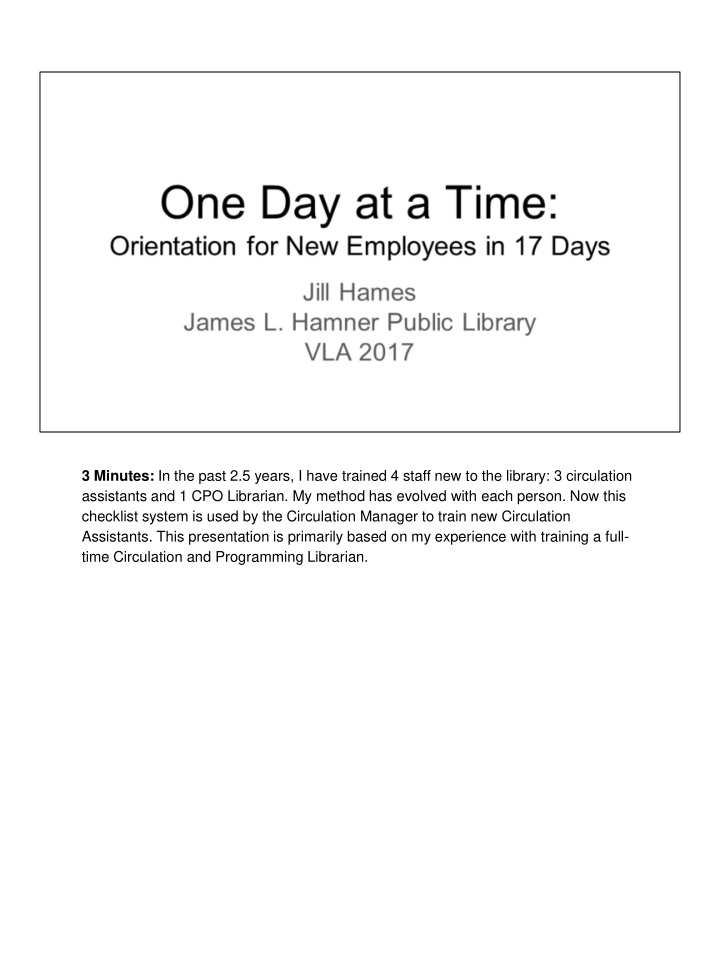



3 Minutes: In the past 2.5 years, I have trained 4 staff new to the library: 3 circulation assistants and 1 CPO Librarian. My method has evolved with each person. Now this checklist system is used by the Circulation Manager to train new Circulation Assistants. This presentation is primarily based on my experience with training a full- time Circulation and Programming Librarian.
5 Minutes: “ How many had too much training? How many have started a position and received too little training or had to figure things out on their own as they went along? How many received sufficient training? About how many hours of training was that?”
5 Minutes: I’m here to talk about training, not orientation in the sense of benefits, safety exists, and dress codes, although that is included in my orientation checklist. For my purposes, “orientation” means a training period where the new employee learns enough to feel they can positively contribute during the first week, but also realizes how much they don’t know and where the resources are to learn those things. I don’t expect a part -timer to be fully trained for at least three months and a full- time person is just getting the hang of the job at the one-year mark, but I still expect to see consistent growth from day one. The orientation training period should lay the foundation to support that growth.
7 Minutes: “What should an orientation program achieve?” - Be aware of policies and practices - Be aware of programs and services - Learn library-specific ILS and other tech - Meet co-workers and other relevant people - Train employee in position-specific tasks
5 Minutes (3 Slides) Show list and talk about - Include practical exercises Give something first day employee can focus on when s/he doesn’t know what - to do Don’t overload with information - - Give plenty of time for information to settle/for informal reflection - Give plenty of time to practice. Give unmonitored practice time. - Try to make training something they can use on the job (e.g. explore a database and create a flier promoting it). - By Week 2, give a project they can claim. - Training should have meaningful, low-risk work. - Explain processes, history behind decisions (e.g. once the door is locked, patrons can’t get their bags b/c too many unattended bags at closing w/ people wanting doors unlocked to retrieve items[lack of respect for staff/library, lack of personal responsibility])
Day 1 = Some logistics and paperwork, plus some actual work. Give them something they can come in on Day 2 and get to work on right away.
Later in the training period = Position specific training. Have training be practice for actual work. Even better if the practice can be polished and actually used.
2 Minutes: Director’s Thoughts and Employee Comments - For full-time, 17 days turned into 2 months - Could be employee specific - Difficult for director to follow-up every day, as intended - Schedule time each day to follow-up - Schedule time each day to allow employee to work on list - For part-time, two weeks might be too much Circulation Manager: “ I like this style of training as it can help the new - employee progress quicker- but there should always be emphasis on training as situations arise.”
2 Minutes: Conclusion - A checklist helps to prevent things from falling through the cracks. It also provides a basis for objectively determining progress during the probation period. Try to give the employee meaningful work no later than the second day.
5 Minutes: Q & A
Recommend
More recommend